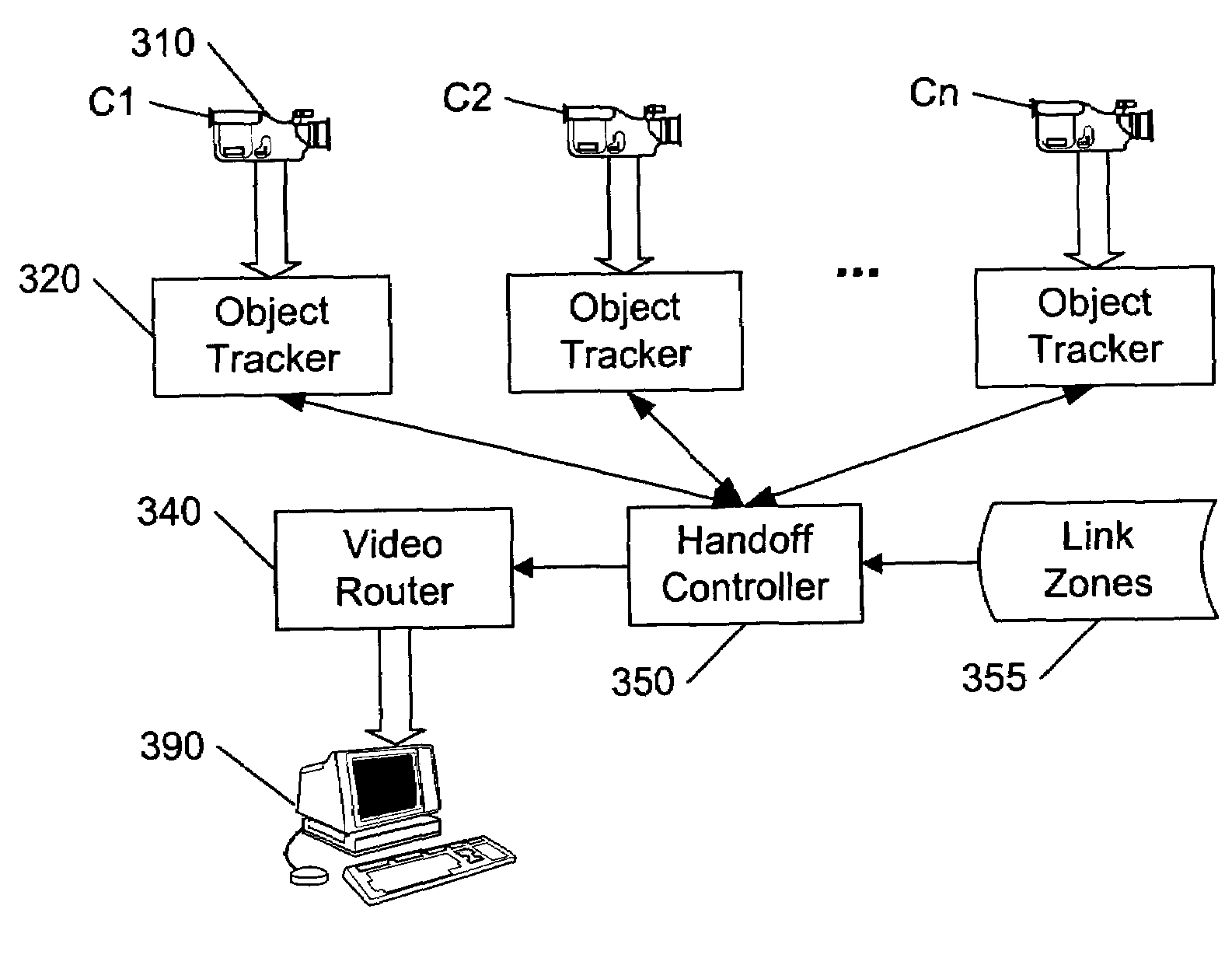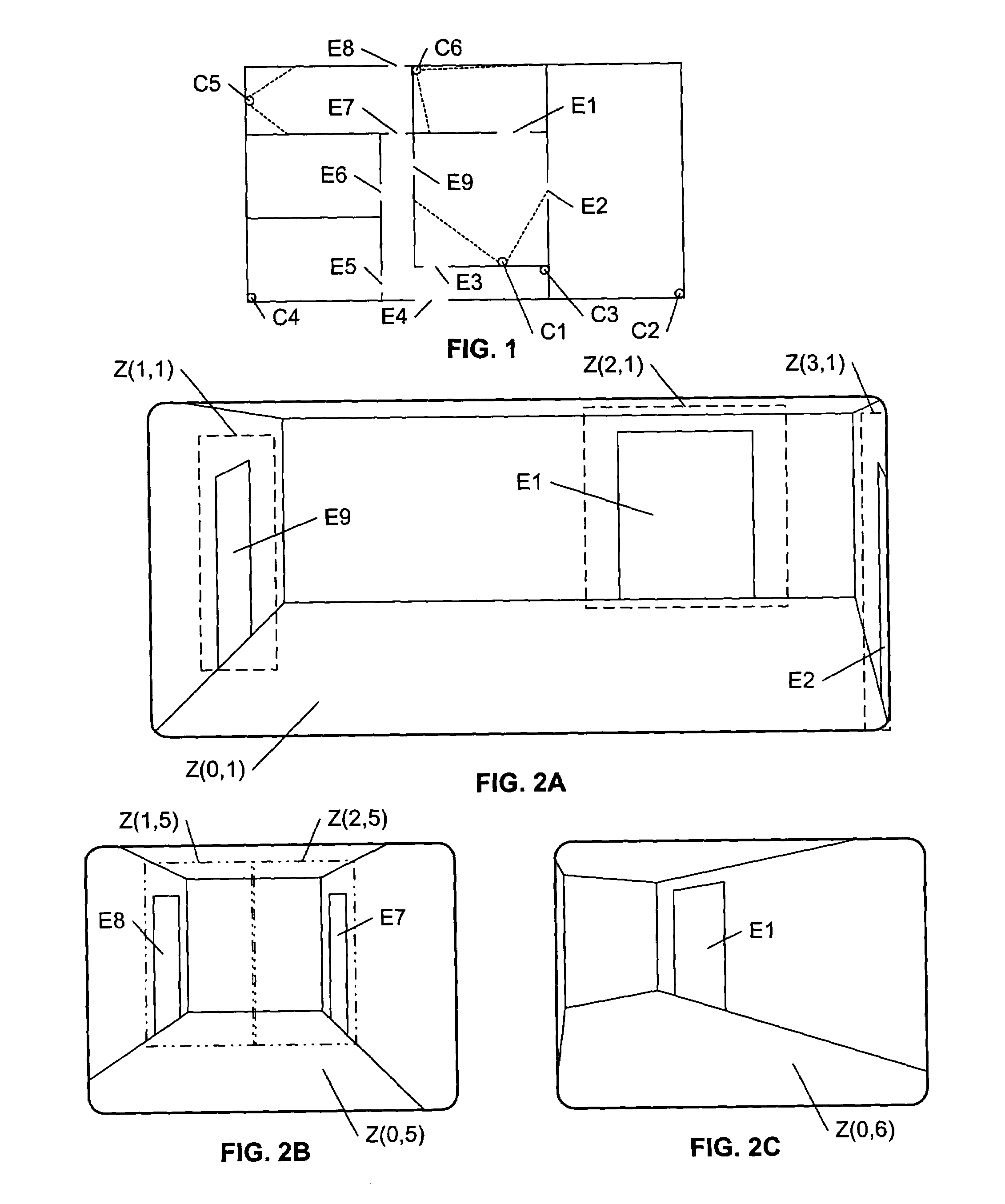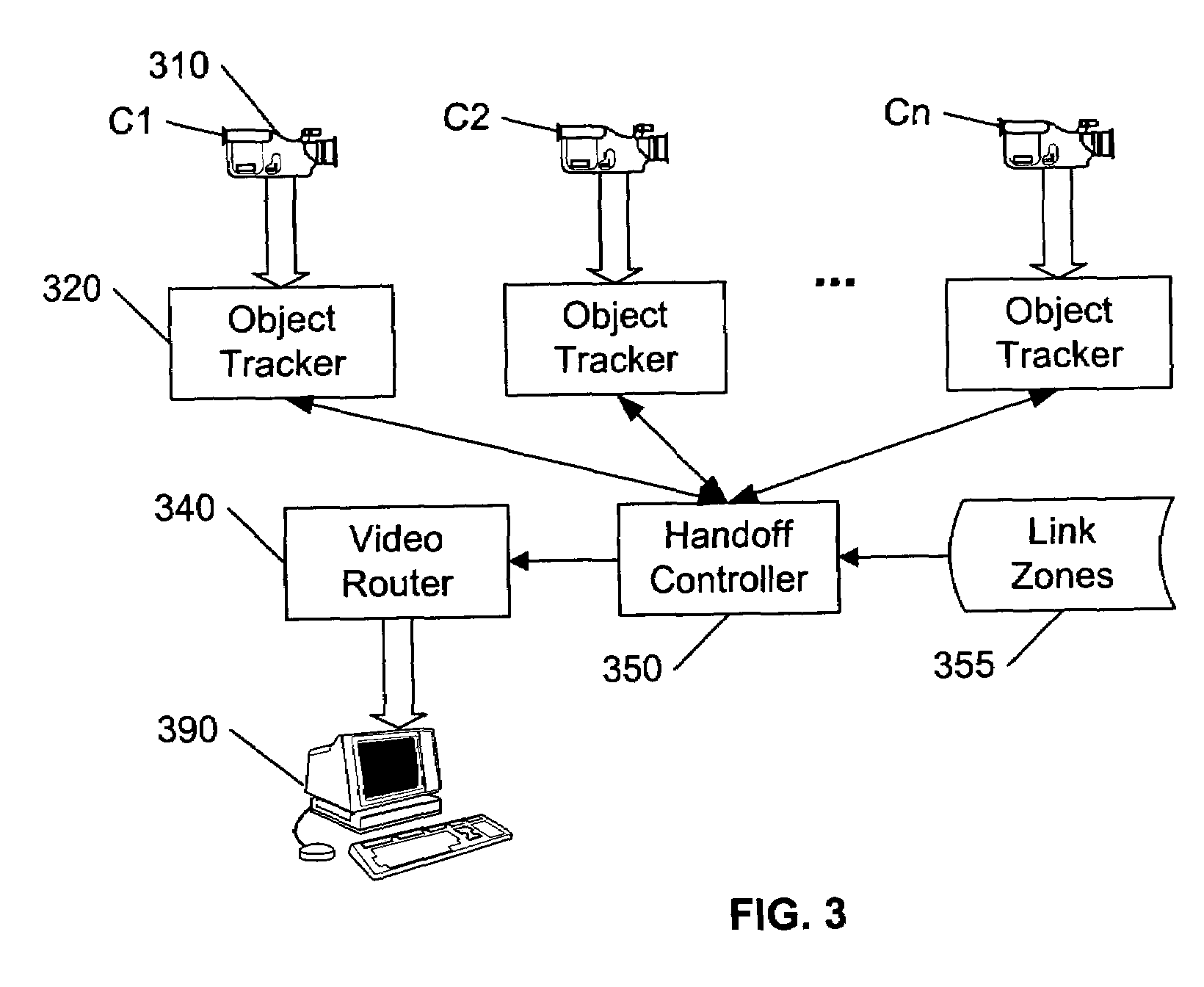Linking zones for object tracking and camera handoff
a technology for object tracking and camera handoff, applied in the field of video surveillance, can solve the problems of object tracking becoming more difficult, affecting the effect of camera handoff, and affecting the reappearance of targets in time and/or space, so as to facilitate camera handoff facilitate camera handoff
- Summary
- Abstract
- Description
- Claims
- Application Information
AI Technical Summary
Benefits of technology
Problems solved by technology
Method used
Image
Examples
Embodiment Construction
[0018]FIG. 1 illustrates an example floorplan of a multiple-camera surveillance area. The floorplan illustrates areas connected by egresses E1–E9 Disposed about the surveillance area are cameras C1–C6. The field of view of two of the cameras, C1 and C5, are illustrated as dashed lines on the floorplan.
[0019]Any of a variety of techniques can be used to track one or more objects within a field of view of a camera. As an object traverses the camera's field of view, an object-tracking module searches each sequential image frame for the target, based on the appearance and / or the motion pattern of the target within a prior image frame. The appearance of the target in each sequential frame will not generally be identical to its appearance in the prior frame, due to changes in the object's posture and orientation as it moves, or due to changes in lighting conditions, camera angle, as the object enters different areas, and so on. Generally, the amount of change from frame to frame is limite...
PUM
 Login to View More
Login to View More Abstract
Description
Claims
Application Information
 Login to View More
Login to View More - R&D
- Intellectual Property
- Life Sciences
- Materials
- Tech Scout
- Unparalleled Data Quality
- Higher Quality Content
- 60% Fewer Hallucinations
Browse by: Latest US Patents, China's latest patents, Technical Efficacy Thesaurus, Application Domain, Technology Topic, Popular Technical Reports.
© 2025 PatSnap. All rights reserved.Legal|Privacy policy|Modern Slavery Act Transparency Statement|Sitemap|About US| Contact US: help@patsnap.com



